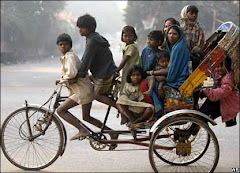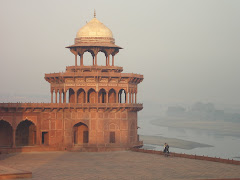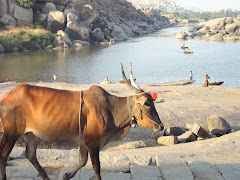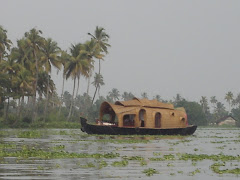Here in the state of Maharashtra we are a third of the way through the monsoon season.
This time last year, I vividly recall the seemingly never ending rains lashing Mumbai; walking through unavoidable rivers that flowed freely through the city, umbrellas that proved utterly useless as they would be blown inside out, shoes and damp clothes rotting from being constantly soaked and having only the humid air to dry out in.
Indeed the demise of my favourite pair of boots was directly due to last years monsoon - when I mistakenly thought that wearing them would be tantamount to wearing chic and styley gumboots! How wrong I was. They totally fell to pieces. The monsoon is sadly not a time for fashion statements.
This year the rain comes...it produces a tiny tinkle, as if it is suffering from a prostate problem...and then it is gone again. The clouds are there, it appears to be thinking of producing something substantial, yet so far it has failed to produce close to the annual rainfall that is required.
Half of this state has received less than 50% of average annual rainfall expected by late July - which in turn has a devestating effect on the lake levels for the power companies, the availability of water, and has a harsh impact upon the agricultural and farming sectors.
The monsoon season is peak sowing time for the 1.28 billion hectares of farmlands that are spread across the state with the drought resulting in only 48 percent of crops having so far been sown. Add this to the increase in transportation cost due to the price of crude and it makes for a dire situation for famers, the majority of whom are poor people who rely completely on the rains for the production of the coming years harvest.
Drought is of course not a new occurance in India, with the most recent debilitating drought in the state of Maharashtra being in 1972-1974. The region has a historical tendancy to suffer severe drought once every 8 or 9 years.
The state government has responded in various ways, firstly by declaring areas drought-hit and in their efforts to provide drinking water to the millions of poor residents within the affected districts. Power companies have started load-shedding with the state only being able to provide 8,500 MW of power against a demand of 12,000 MW. The state government has approached the union government for 1,000 Crore (Rupees 10 billion/233 million USD) in relief funding. I suspect that rather large figure will not be forthcoming, however I do hope to see some innovative and forward thinking solutions put in place.
This year I wait for the rains to reduce the humidity. I have not been personally affected by the drought yet although other suburbs in Mumbai have been affected by power outages. There is still time for the monsoon to put in a better effort than it has to date to alleviate the potential fallout of a drought.
And me? I am doing a rain dance.























No comments:
Post a Comment